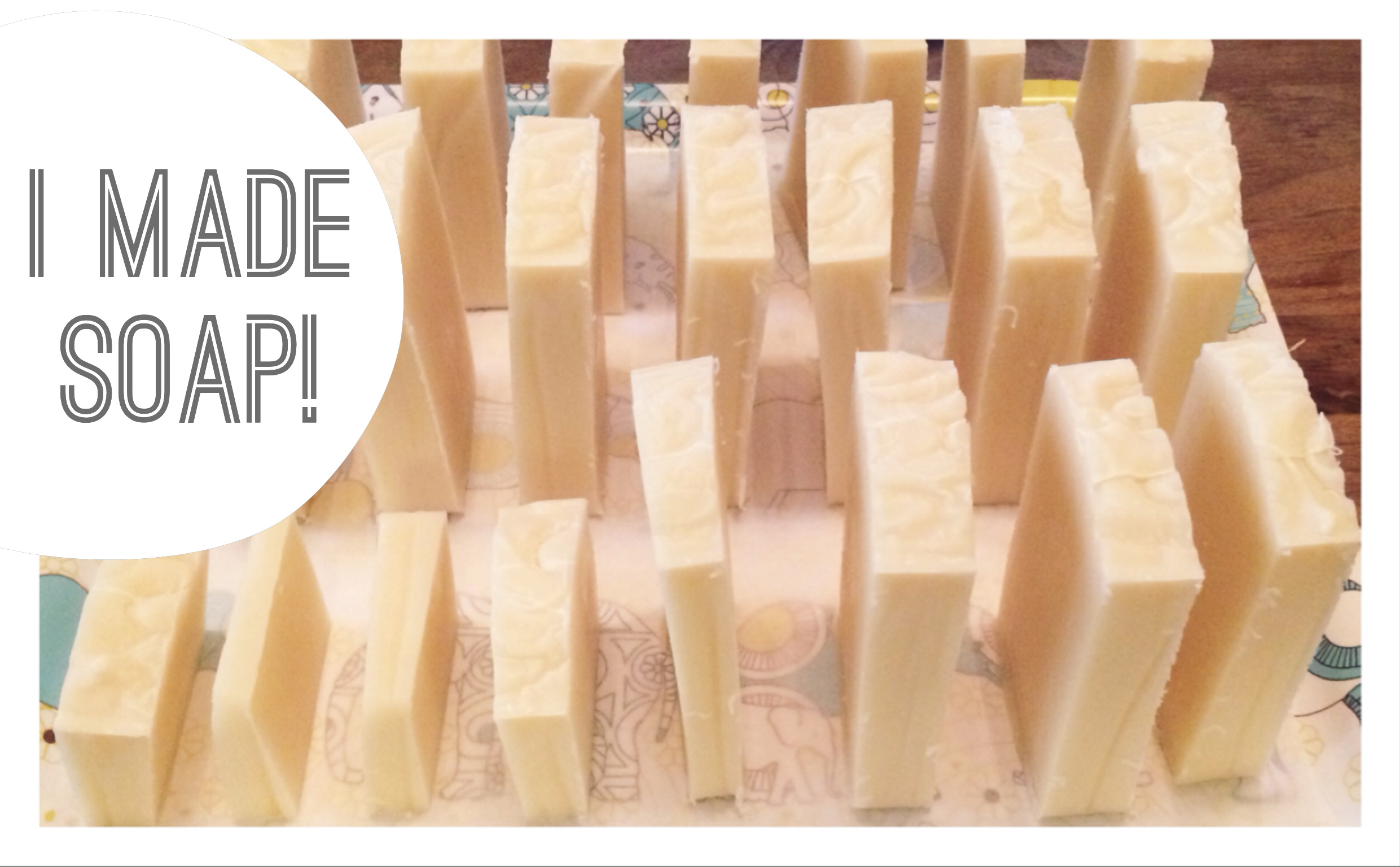I believe I have Heisenberg to blame for my new soap obsession. (Not the first Heisenberg, the second, more contemporary one, but maybe actually also the first one since the second took his name from him, well whatever stop rambling.)

Watching Breaking Bad last fall left me itching to mess around with chemistry. But since I have no use for illicit drugs nor a desire to blow up my house nor even to mess around with becoming a terrifying criminal, I turned my attention to chemistry that has a bit more, you know, application to my daily life. And when I saw my friend Donna mention her soap-making habit on Facebook, well, my mild interest in domestic chemistry turned rapidly into a full-blown inevitable obsession. Which only grew more inevitable and obsessive after Donna invited me over to watch her make soap.
I’m talking about cold-process soap-making here. There are other ways of making soap, and when I first started mentioning my new obsession, people frequently assumed I would embark upon the less-involved gateway hobby of making melt-and-pour soap. But melt-and-pour (which is pretty self-explanatory: it’s when you buy a hunk of soap, melt it, and pour it into nifty molds, sometimes with fun additions like toys) is not an exercise in messing with chemistry, and my not-a-criminal-thankyouverymuch internal Heisenberg wanted nothing to do with it.
No, my internal Heisenberg wanted to mess around with acid and thermometers and essential oils and fats.
So after Donna enabled me to confirm that my new obsession is very real, I started to collect all the stuff I’d need to make cold-process soap at home. Because of the lye, which is no mild chemical, you need some dedicated soap-making equipment. So I started collecting things like a cheap immersion blender, some gigantic Pyrex measuring cups, and a whisk.
Knowing that I learn best by doing, and that I’m prone to become overwhelmed if I’m unable to learn in pieces, I bit the bullet and ordered a kit for my first batch of soap. After comparison shopping a lot, and with some invaluable advice from Donna, I chose the lavender and cocoa butter kit from Voyageur. Which may seem super pricey for just one four-pound batch of soap, but it’s actually a great deal because it includes a few things I’ll need to use again and again, like a really fabulous wooden soap mold (seen above, just after I poured soap into it), cutting blade, and thermometer.

Soap-making involves some very precise measuring, and the bonus of using a kit the first time was that I didn’t have to do much of it – the lye and fats were all pre-measured. This allowed me to focus on the rest of the process, which was very good. Lye, for example, is as harsh and awful as they say. Getting the oils within range of the lye’s temperature involved both the microwave and the refrigerator (if I stick with this hobby, a hot-plate in the workshop may be the next addition to my tool kit). And having all the ingredients pre-mixed allowed me to focus on all the other things and how they relate. For example, when my poured soap started to crack, and I mentioned it on Twitter, Donna explained that it was too hot and told me how to correct for that – I didn’t have to worry that I’d mixed something wrong, which was helpful.
If you’re very attentive, you may have noticed that the Voyageur kit includes purple colourant, but my soap is not purple. That’s because I forgot to use the colourant. To be honest, I’m not super keen on coloured soap anyway, so I’m not at all disappointed that I missed that step. If I end up making loads of soap, though, colour will certainly help differentiate one type from another.
And there will be more. Yesterday, I put in an order for ingredients to make my first fully from-scratch batch. Oh yes.
(Chances are good that if I come over to your house for dinner sometime soon, I will bring you a bar of soap.)
PS Unrelated to crime, I now see that making soap is one of the few crafts I’ve ever tried that has any sort of business potential. Not only do you end up with more than you’d be able to use, but it’s special and awesome and a pretty efficient use of time. So there’s that.
PPS The cut soap needs to cure for a few weeks. Which means my studio, where this tray is perched, smells amazing all the time.

Leave a Reply to Kim Werker Cancel reply